Living Off The Grid Tips & Tricks #2: How to charge your phone and USB devices on 12V, 24V and 48V solar power systems
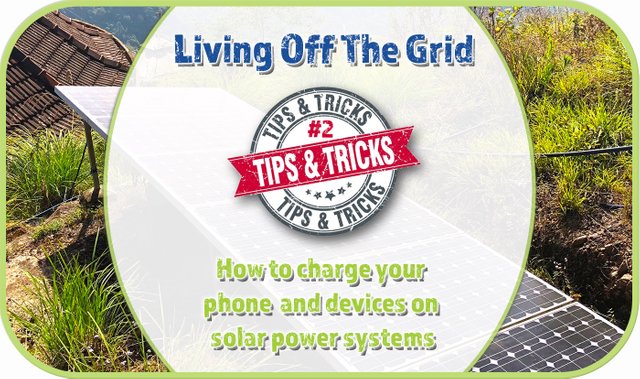
Welcome to the second part of this new tips and tricks series! Living from solar power successfully means not having power cuts, and choosing the right way to charge appliances is a big part of saving power! These days USB charging is almost ubiquitous to nearly all phones, portable speakers, cameras, and on the list goes. Most of these appliances come with a normal 110V/240V AC charger, which converts this into 5V DC, which is the standard voltage for USB devices. Using the plugs that come with these devices means using your inverter, which more often than not will consume more power just being on than it does charging small USB devices.
So in this tips and tricks id like to share with you what I think is the best way to charge your devices safely, and efficiently! There are many options available, but after much experimenting, the following is now my chosen method. The approach is slightly different depending on what voltage you are running your batteries at, so I include detail on the three most common voltages used:
Choosing The Right Tech!
The most important thing is to choose the right device for charging. There are hundreds of different products, and they are not all the same! The key thing here is to look at AMPS because that will determine the speed of the charge. These days anything less than 3AMPS is considered slow, although you can live with 2.4Amp without too much pain. The older 1 AMP models are a waste of time and will take far too long to charge a phone if they can at all.
With that in mind, and a few other things, here are the products I recommend. Note that I am using ebay.com as they are products you can most likely purchase or find worldwide.
1. Cheap n Best!
New Usb Hard Wire Fr 12v-5v 3a 15w Car Phone Female Charger Dual Module Power - USA $4.37
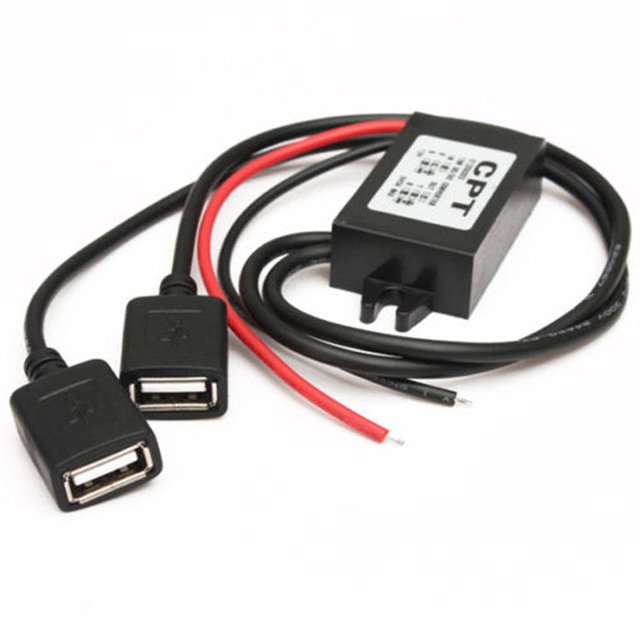
These are no frills, and VERy easy to install! Just wire the plus to the plus of and minus to the LOAD on your SOLAR CHARGE CONTROLLER. You really shouldn't wire them directly to the battery you may drain them past the point that the controller would otherwise switch off.
You can house them as you wish, and even make a nice box if you like. The thing to note here is that when you plug two devices in at once the charging drops to 1.5AMP per device, which isn't great. If you are lucky you can find these with just one USB socket for each, and just buy as many as you need to cover all your devices. That is what I have and it has been working well for a long time now without any troubles!
SEE IT / BUY IT HERE:
https://www.ebay.com/itm/12V-5V-Dual-USB-Car-Inverter-Female-Hard-Wire-Power-Charger-fr-GPS-Tablet-Phone/182608628220?hash=item2a845289fc:g:QAIAAOSwJH1ZNTdc
A NOTE ON WIRES AND EFFICIENCY
These days phones take a lot more power than they used to, around 10-15 watts each or 3 AMPs of current at 5 Volts DC. The important note to mention here is that you should use wire that is as thick as you can get so that you don't reduce efficiency or cause overheating of wires due to high AMPs. The higher voltage the system, the longer the wires can be without losing too much current., which is why many people prefer a 48 volt system.
Also, the wires shouldn't be too far from the solar charge controller. If they are more than 10 meters then you should be using thick 15 or even 10 gauge copper wires.
2. Fast Charging Device
a) Three-Port USB 5V 4.2A Quick Charge 3.0 Car Charger Adapter LED Display Fast Charger- USD $4.89

Most car chargers cannot handle fast charging, which requires around 4.2 AMPs, and its easy to be fooled into thinking that they can! The reason is that a device with 2 USB sockets and marked as 4.8 AMP can often only supply a maximum of 2.4 AMP to each USB socket, so you have to be careful.
This device that is clearly marked as a fast charger and has its own fast charging socket on it. It even has a little battery voltage LED display so you can keep your eyes on the voltage as you charge.
b) 1 to 3 Car Cigarette Lighter Socket Splitter DC 12v 24v Power Charger Adapter - US $11.99
As you can see this device normally fits into a cigarette lighter, and so you also need to buy some female adaptors that make the whole job nice and easy. Here is a model that lets you hook up three at once and could also be mounted inside a custom-made box:

https://www.ebay.com/itm/1-to-3-Car-Cigarette-Lighter-Socket-Splitter-DC-12v-24v-Power-Charger-Adapter/173570958933?hash=item2869a2a655:g:HjUAAOSw4gpbtfPH
3. Wireless Charging
Can't live without your wireless charging? You can use something like this product, which was made for a few different phone brands.
10W FAST Qi Wireless Charger Car Holder Stand For iPhone X 8 Plus Samsung Note 9 $ USD 3.75

https://www.ebay.com/itm/10W-FAST-Qi-Wireless-Charger-Car-Holder-Stand-For-iPhone-X-8-Plus-Samsung-Note-9/372401899171?hash=item56b4e206a3:m:mInJjhhRRd_qfNVcjmZgmbg
It charges at high speed and has good rotation options. I also like that is clamps so it can't get moved by accident and always charges!
Now that you have the main products lets see how we integrate them into different voltage systems:
12 Volt Solar Systems
The old industry standard and most simple type of system is the 12 volt! ITs usually created with one 12 Volt Deep Cycle Tubular Battery, or two 6 volt batteries wired together in series, which means that the + wire of the first battery connects to the terminal on the second battery.
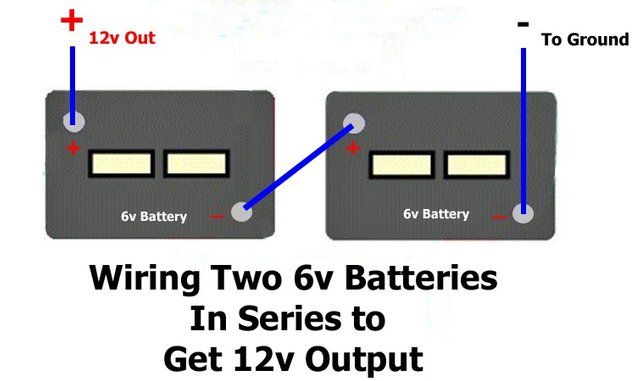
12 Volt systems are the easiest to find products for because they are the same as car systems. Therefore any USB charger that works in a car will also work on a 12V solar system out of the box.
Hook up TWO wires to the charge controller and you are done basically!
24 Volt Systems.
There is one step we have to add to 24 & 48 volt systems so that your brand spanking new 12 Volt USB charger doesn't explode when you wire it up! You need to reduce the voltage to 12 Volts and here is the best product I've found to do that job. They are cheap, use almost no standby current and can be left on all day and night. They can be used to power 12v DC LED lights as well.
DC24V To DC12V 30A 360W Step Down Power Supply Converter Regulator - $USD 20 approx
https://www.ebay.ca/itm/DC24V-To-DC12V-30A-360W-Step-Down-Power-Supply-Converter-Regulator-Module-Hot-/192429551320

3. 48 Volt Systems
48V to 12V DC-to-DC Step-Down Module Power Volt Regulator $USD 20 approx
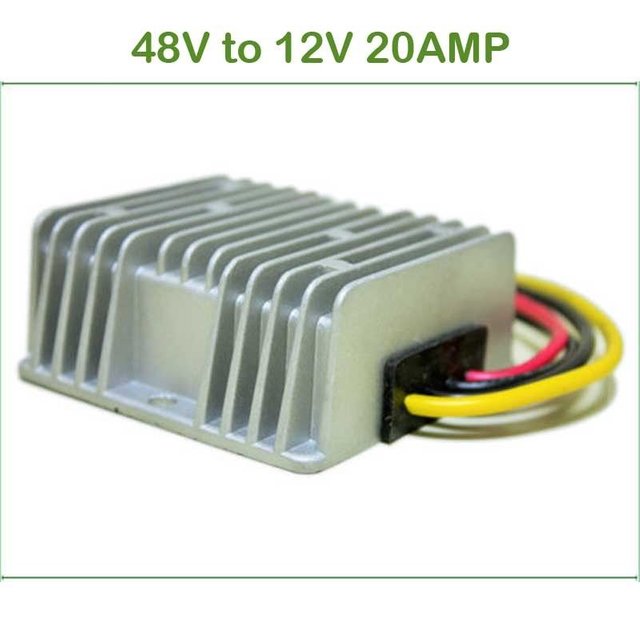
A NOTE ON 48 VOLT PRODUCTS
Did you know that 48 Volts is the same voltage used by many luxury golf carts!? That means that if you are looking for products that will work on your 48-volt system directly you might try browsing golf cart products. It's all out there!
Feeling hot? A 48 VOlt DC fan might help!
So that is it! If you charge your devices this way you should have an easy and stress-free life! I have everything I can run off 12 volts, including my lights, internet wifi systems and routers. Many routers use 12v, and so they can easily be wired up to a solar system. An Important note on that is that if you are using a 12-volt system then the voltage does fluctuate from around 10.5Volts up to 14.5 Volts on a sunny day. This could easily damage or shorten the life of your routers or lights, and so you need to use a voltage stabiliser or a solar charge controller that can provide a stabilised 12v current. Its easy on a 24 and 48-volt system as you will already be using the step-down power supply mentioned above to deliver a constant 12-volt supply.

Read previous tips and tricks for living off-grid!
Living Off The Grid Tips & Tricks #1: Solar Powered Fridges are now a no brainer!!
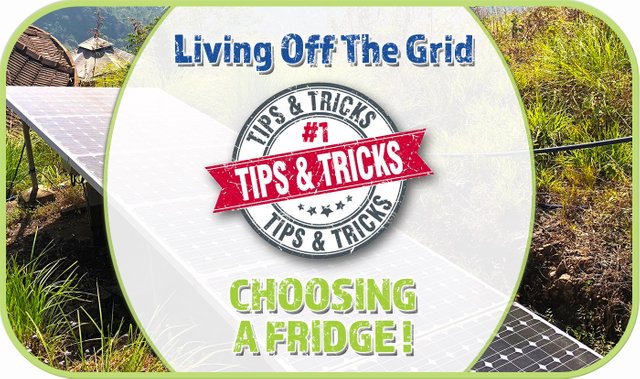
If there is something you would like to know about relating to living off-grid please let me know in the comments and ill do a post on it! There is SO much information and so many great ideas out there, and some of them really can make a huge difference to our lives when we are self sufficient.
Click here to learn more about the solar power at my Earthship?

@ecoTrain
Supporting People Who Help
Make The World A Better Place

Discover previous ecoTrain magazines at @ecoTrain
** Click Here For More Information on the ecoTrain **

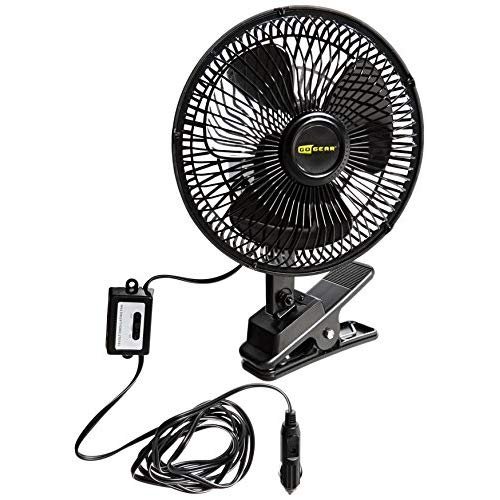

Thanks for the breakdown. I have a little solar panel/battery backup thing I bought several months ago, and I wish I had understood more at the time. The solar is largely useless as out takes OVER A MONTH to fill the battery by itself. But even when I treat it as just a backup battery and charge it in the wall, I have since discovered my phone drains so fast/it charges so slow, that with my phone in sleep mode, it doesn't charge the phone fast enough and the phone will still drain out and die. Ugggggh. It will charge my Kindle, though. LOL You live, you learn, I guess!
I think everybody fully off-grid went through this learning period, nothing to worry about. Anything less than 2 solid 150Ah batteries and a total of 150W panels is playing and learning time.
Bless people like @eco-alex shedding some lights on hands-on experience
Posted using Partiko Android
thank you! i have learned the hard way too.. and tried and played with so many systems in my off grid journey. panels are getting SO cheap now its amazing, and devices are using less and less energy.. One day maybe you can upgrade a little! thanks for your comment!
This man is a legend. I owe my lights and power to him. Glad I found this Series!
I had a list of articles regarding off the grid living. My upcoming article is also related to off-the-grid power generation but I am taking a sweet time writing it.
Very nice to meet you and read about your ideas. I will read more in-depth.
Cheers
Also if you are writing for #SteemSTEM, keep in mind that no votes are being given for voting bot users.
im sure youll get there eventually alex!
and thanks for the heads up on the rules of steemstem!
Thanks for an amazing post. That was an incredible amount of info. Since we are traveling full time we have often talked about ways to keep our tech charged. Thanks for the ideas. Well done.
Cool ideas! This would totally come in handy especially if there's no electricity. Glad that I happen to read your post!
Your post had been curated by the @buildawhale team and mentioned here:
https://steemit.com/curation/@buildawhale/buildawhale-curation-digest-10-10-18
Keep up the good work and original content, everyone appreciates it!